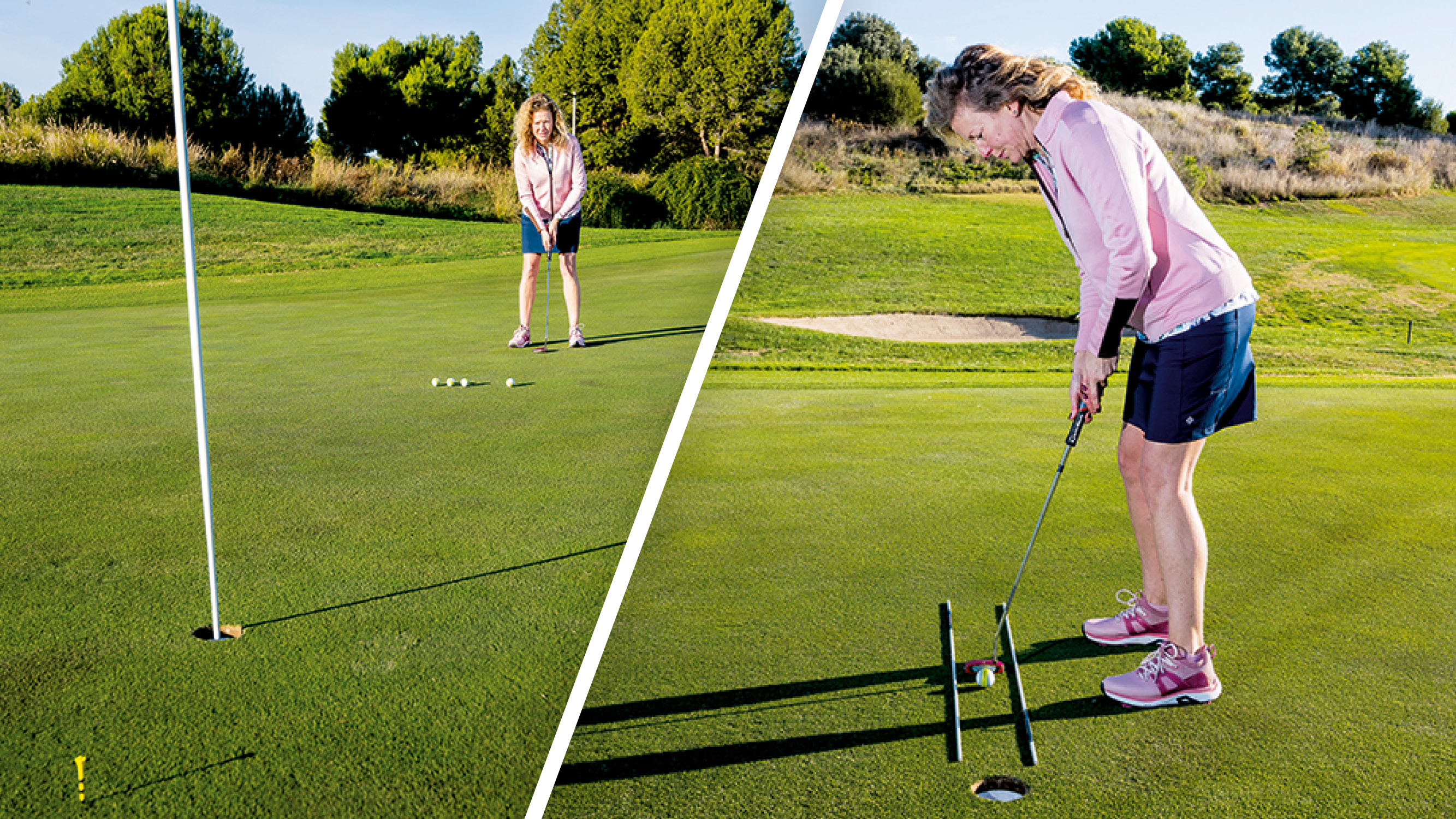
The putter is golf’s most used club, and whatever standard we play to, we can all improve our putting and benefit from the best putting tips. Even a few minutes a day working on your putting at home can make a big difference, and for those who can find the time to get to the course, practice can still be boring and unproductive if you only ever roll putts at a hole.
In this article, Golf Monthly Top 50 Coach Katie Dawkins runs through her expert tips, shares a handy technique checklist and introduces a set of 5 putting games which are devised to make practice more effective and fun...
Before you try out any of my putting games, it’s a good idea to make sure your fundamentals are sound by checking that your putter, grip, stance and alignment are not holding you back.
Does Your Putter Sit Flat To The Surface?
The sole of your putter should ideally sit flat to the ground at set-up. If either the heel or toe is up, it can lead to faults in your stroke that you will then have to compensate for. If your putter is poorly fitted and too short, for instance, you will push putts out to the right of the hole. A putter fitting specialist can help pinpoint the right club for your stroke.
Set-Up Fundamentals
Make sure your eyes are over the ball. You can check this by dropping a golf ball from between your eyes – where it lands is where it should be. Anchor your elbows gently into the sides of your body to encourage a pendulum action and prevent the wrists from taking over.
You should be able to draw an imaginary triangle between shoulders and hands to connect them. If you’re standing the right distance away, you should feel neither stretched nor crowded over the ball.
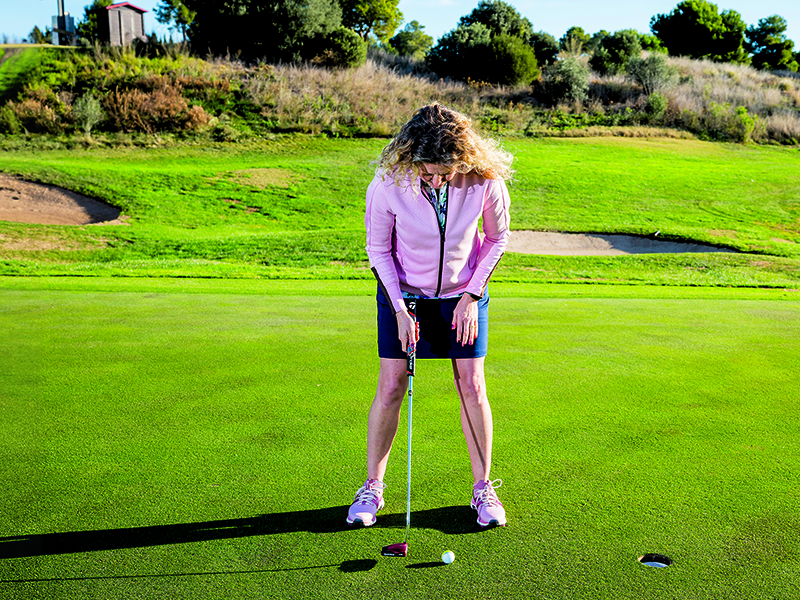
Grip
There are a number of ways to hold your putter and it’s really down to the individual, but do experiment with various grips to see which you prefer, whether conventional, left-below-right, or the claw.
The one thing you must never do is hold your putter as you would an iron, because this kind of grip is too much in the fingers and can cause your wrists to get too active and flick at the ball.
Holding the putter so that it runs through the life lines in the palms of your hands will effectively see you putt in a more ‘hands-free’ way. Your hands should adopt a soft hold such that you may even feel like you haven’t got a firm grip on your putter. One of the most important things is for your putting grip to take any tension away from your hands so you can roll the ball freely. Stroke it, don’t hit it.
Hone Your Stroke
Set two alignment sticks down just wider than your putter head to create a track. This is a great drill to encourage a straight-back-and-through stroke on short putts.
Drawing an alignment line on your ball or buying pre-marked ones will help with your aim, too. Spending a bit of time and energy working on your putting fundamentals can certainly reap big dividends on the greens.
Now you’re ready for my fun games that will make you actually want to go and put the work in. Get a friend to join you for a friendly competition using these challenges and watch your scores tumble thanks to your hard work on the greens...

1. Snakes And Ladders
One of the hardest things to replicate in practice is the pressure we feel when faced with a short-distance putt in a competition round. The aim of this game is to simulate those pressure-packed moments, with consequences for missing.
To set up a ‘putting ladder’, measure a putter length from the hole, then three more starting points in one-putter-grip increments to take you progressively further away from the hole. Use tee pegs to mark each starting point like the rungs of a ladder, then put a golf ball down next to each tee.
The aim of the game is to start at the nearest tee, or rung, and roll the ball into the hole, then work your way up the ladder. As you get further away, the putts will become more difficult.
The catch? If you miss a putt, you have to go right back down the ladder and start again. You only succeed if you manage to hole all four putts from the different rungs without missing one. To take it further, you can add more starting points and balls, or even try it on a breaking putt to create more pressure.

2. Distance Control Game
In my view, the biggest cause of three-putting (or more) isn’t poor aim or technique, but rather poor distance control. I’ve devised this game to help improve your feel. It’s designed so that you control the distance the ball rolls by varying the length of stroke, rather than hitting it harder or softer. This is a great game to play just before a round of golf as it will really help you dial into the pace of the greens on the day.
You don’t need a target hole, just a reasonably flat area. Put a tee in the green and take four balls. Roll them one at a time from this starting point, focusing on maintaining the same tick-tock tempo. The only difference with each one is that I want you to vary the length of your stroke.
Doing this, you should end up with four balls different distances away. The real art is to now roll each ball back to the tee using muscle memory to recall the length of stroke needed to hit it that distance. Repeat until you find the right stroke length to lag the return putts close. Bonus points if you can hit the tee!
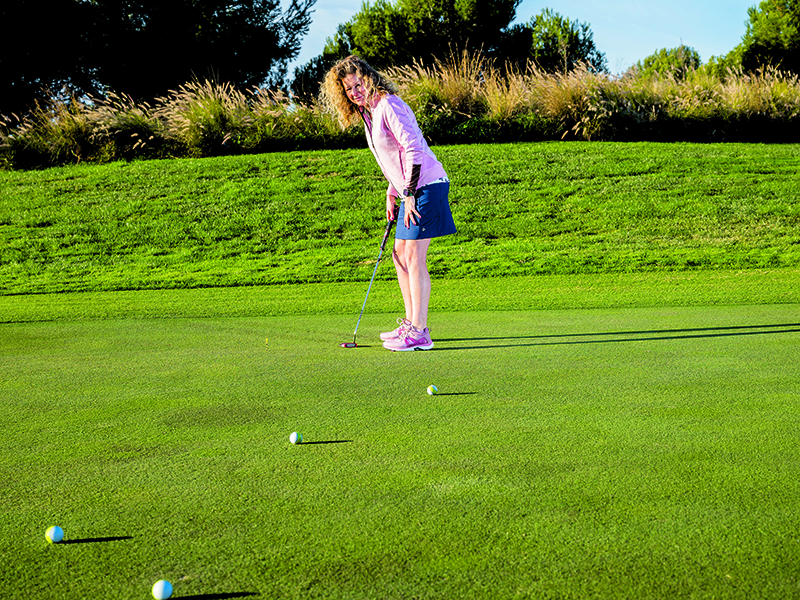
3. The Scoring Game
Continuing with the theme from ‘snakes and ladders’ of making your putting practice as realistic as possible, it’s good to make sure there are consequences via a scoring system.
Select a hole on the practice green that is around 20ft away. I’d recommend starting on a fairly flat putt, but you can make it more challenging (and fun) by adding in some slopes.
You have four balls to putt, with a straightforward scoring system. It’s five points if you hole a putt and two points if your ball finishes within a putter-length past the hole (the tee).
More than a putter-length past and it’s minus one point and if you leave any putt short of the hole, it’s minus three. Keep a record of your total score. Repeat this game over the course of a few weeks and try to beat your previous best score every time.
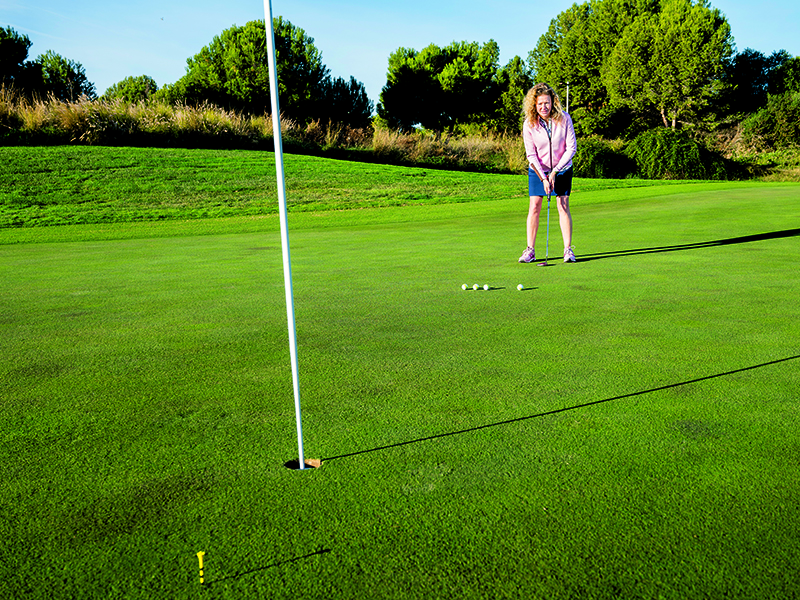
4. Sunny Day Shadow Game
This is a fantastic game to play on a sunny day when the shadow of the pin casts a straight line on the green. It’s like drawing a chalk line as a track to follow. You’ll need to find a flat putting surface for this drill to work effectively as you are going to follow the straight line.
The aim is to roll putts along the shadow and into the hole. Set up the same ladder arrangement as in ‘snakes and ladders’ and hole putts by rolling them along the line, working your way up it. Try to hole four in a row. If you miss one, you have to go back and start again.
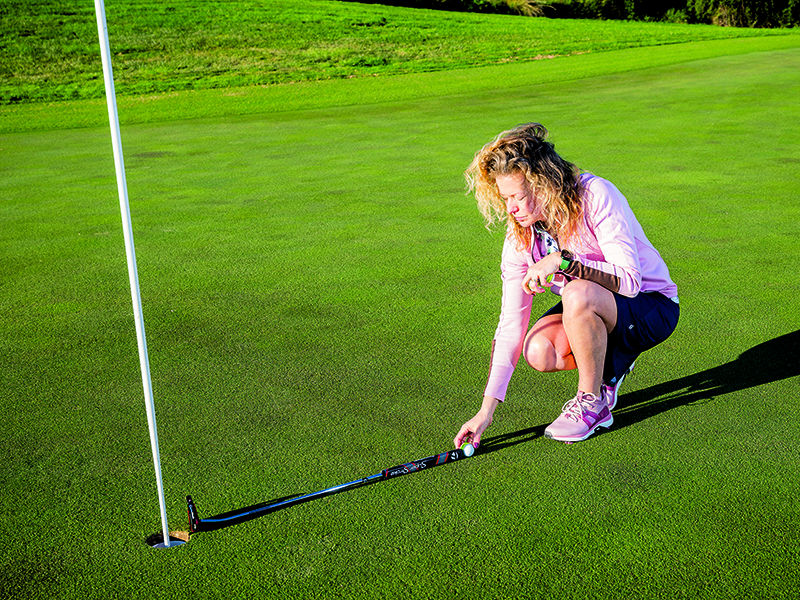
5. Four Points Of A Compass
You’ll need a poker chip ball-marker for this game. Place it anywhere on the green. In fact, the more adventurous you are in choosing a mix of slopes, the better – uphill, downhill, left-to-right and right-to-left. Then place golf balls three feet away from the marker at the four points of the compass – north, south, east and west.

The aim is to hit the marker with your putts from each point of the compass. If you miss, you have to go back to the start and try again. You only complete the challenge when you have hit the marker from all four points of the compass in succession without missing. Shrinking the target to a poker chip also shrinks the margin of error, so when you go out onto the course the hole will look like a bucket!







